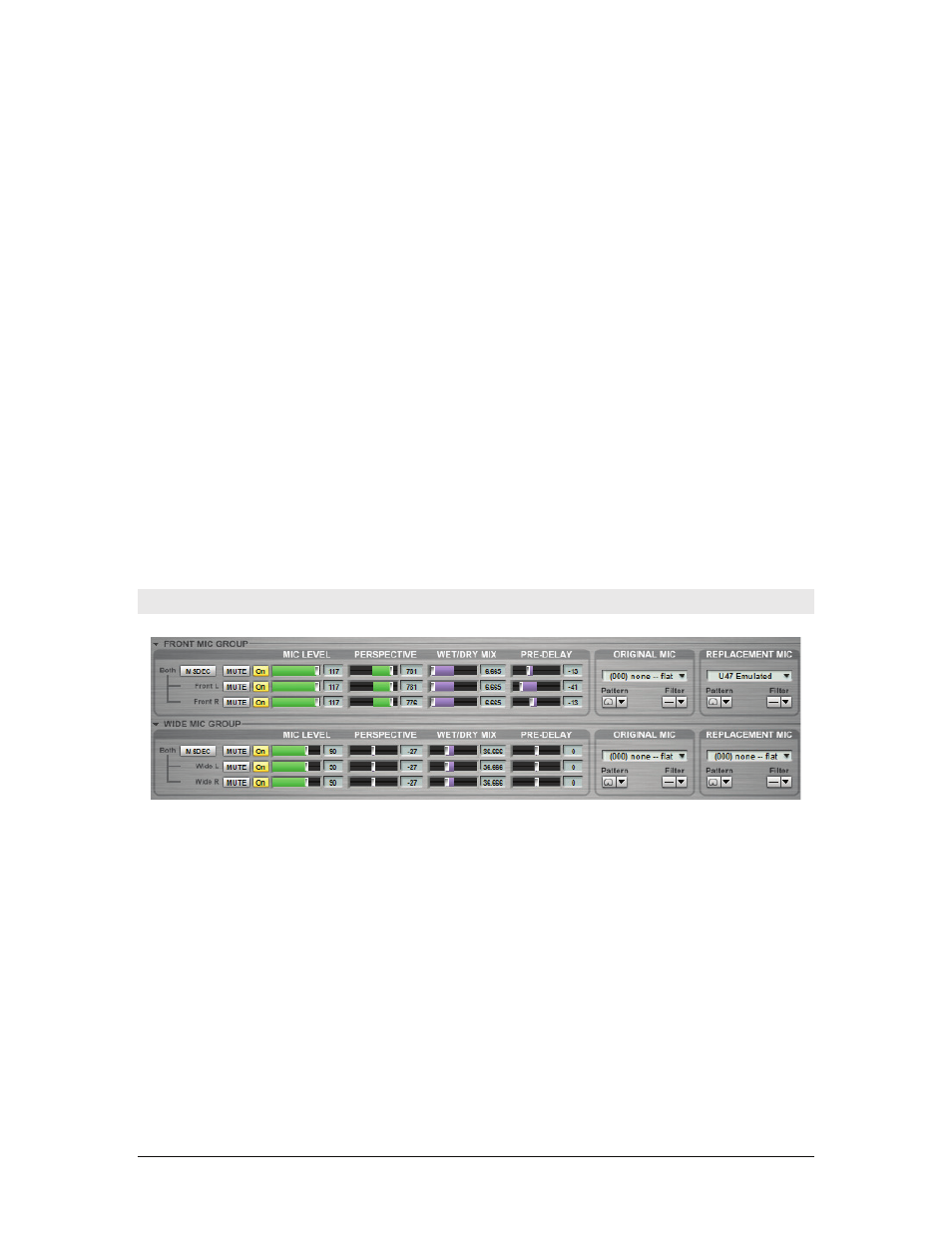Front, wide, and surround mic groups – Teac GigaStudio 4 User Manual
Page 158

GigaStudio 4 Reference Manual
158
Another way to describe perspective is that it is like getting closer (tighter) to the sound source or further
away (looser) except for the timing aspect of mic placement. You get the net effect of more direct signal and
less reverberation, or just the opposite, depending on the positive or negative setting.
Using the perspective, you can control the closeness of the mic placement without affecting the timing (phase
alignment) of the source the signal. It's generally better to adjust Perspective instead of changing your wet/dry
mix to change the sound of the room.
Wet/Dry Mix
Adjust the ratio (balance) of wet versus dry signal for all the Mic Groups. Most often, a convolved room
should be used with a 100% wet mix and Perspective should be used to change the room tone. Most signal
processor equipment emulations should be set to 50/50% mix.
Pre-Delay
This setting delays the impulse up to 64 samples, in order to compensate for latency introduced in the IR. It
may be used to align multiple mic positions for phase discrepancies.
If you need more room placements than the one provided in the preset bank,, or there is a need to place a source
either in-between, beyond, or in front of the available IR placements, then the Perspective and Pre-Delay
controls can help to achieve the desired virtual placement within the selected environment.
Mic Master On button
Enable a Mic Group channel by clicking On button so that it is active. When you select a mic button in the
Placement Selection grid the corresponding Mic Group On button will follow the selection.
Front, Wide, and Surround Mic Groups
Controls for the individual Mic Group channels.
MSDEC button
This can be used for decoding an Mid-Side-encoded sampled instrument or impulse response. MS recording
uses a Cardoid and Figure-8 microphone placed at right angles to create a stereo image.
There are some interesting possible applications using stereo source material and convolving it with an MS-
encoded impulse response, using the MSDEC, and get some interesting spatial variations. Keep in mind that
just as with any other MS type recording, you do not have individual left and right channel volume, but more
of a single volume (point source) along with a width control.
A good application of a Mid-Side IR would be for mono sampled instruments gaining the ability to adjust for
the amount of ambience, or width, in real time. In terms of system streaming and efficiency, you are only
pulling one stream of samples off the hard drive yet output up to seven channels of audio from that one stream
using the GigaPulse Pro interface. You can always MS decode any normal signal. It won’t be a correct signal,
but you may find a use for that anyway.